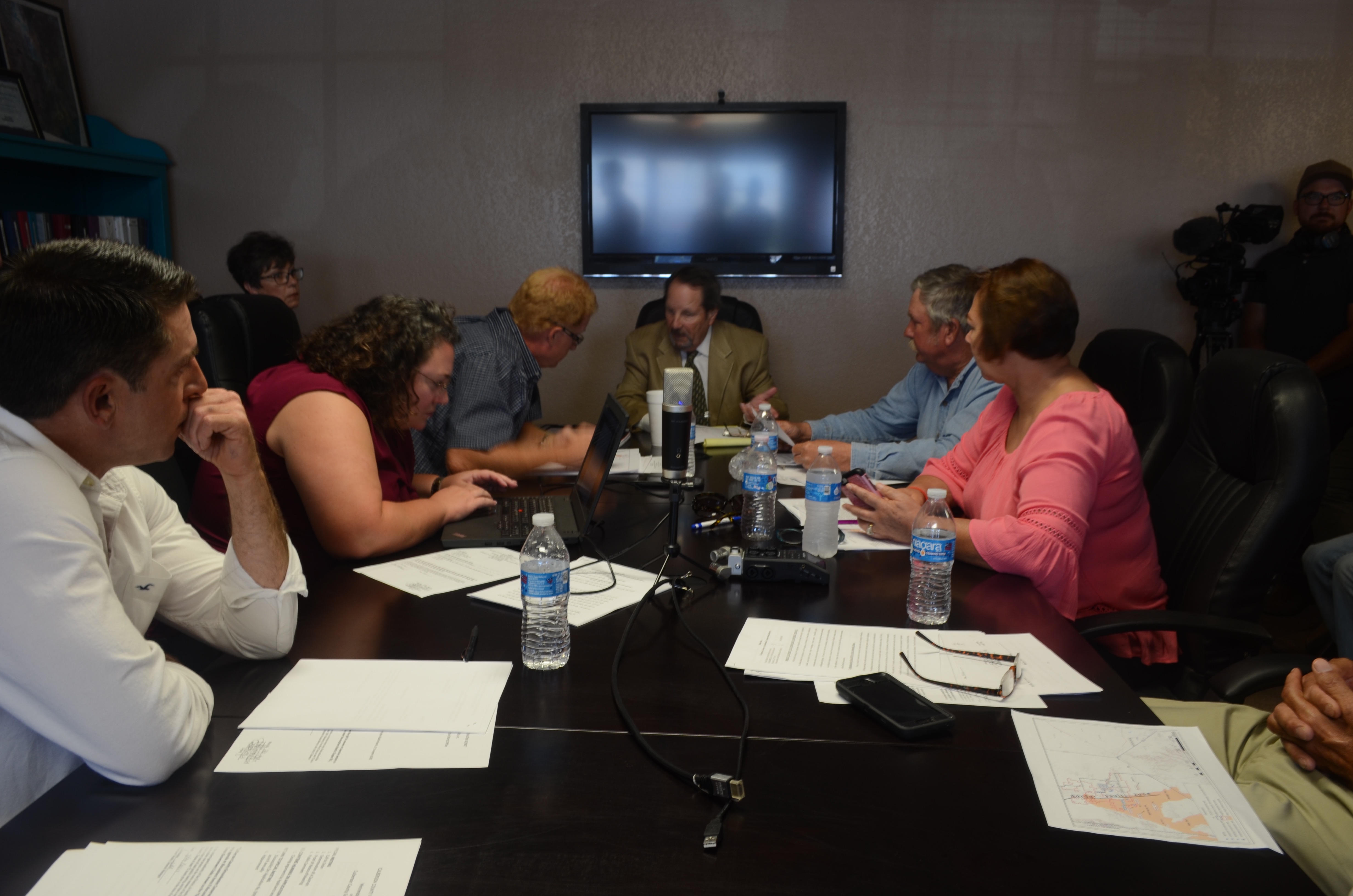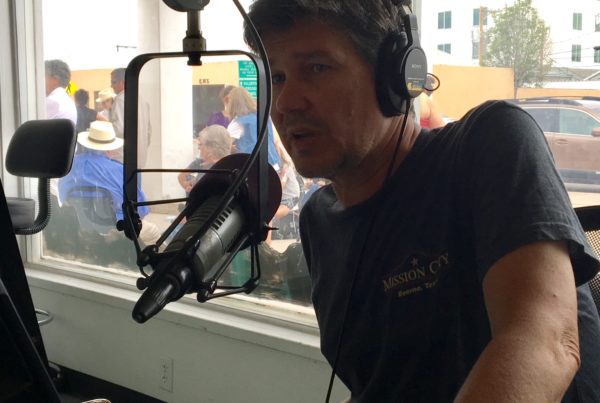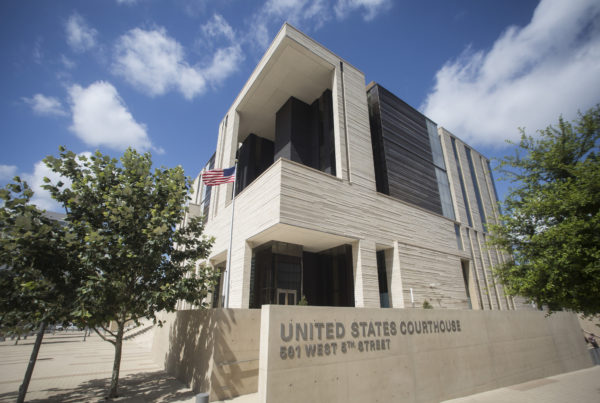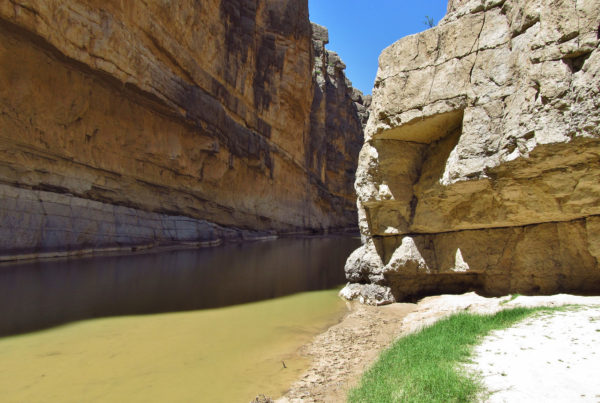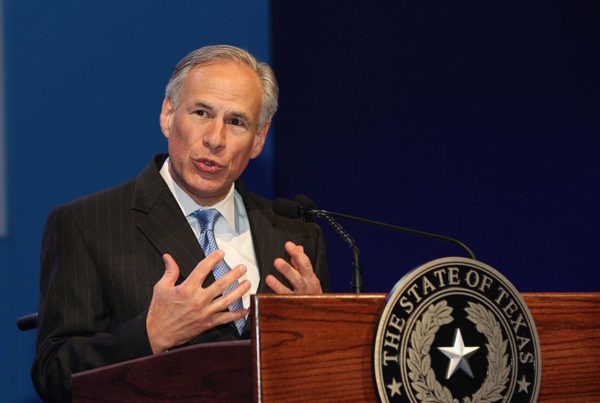In a nondescript building on Van Horn’s sleepy main drag, the main event is a meeting of the Culberson County Groundwater Conservation District, the local water regulatory board. Full disclosure, it’s not usually this packed. But this gathering, held earlier this month, brought out ranchers, farmers and environmentalists.
On the agenda is water export. Oil man and ranch owner Dan Allen Hughes, Jr. wants permission from the board to pump 5.4 million gallons of brackish water a day out from under his property. For perspective, that much water could fill more than eight Olympic-sized swimming pools.
Dozens of area residents explain why they’re against issuing Hughes an export permit.
“Nobody in this room can live without water,” says water activist, Neta Rhyne. “We all have to have water. So does our cattle, our trees, our crops.”
Hughes’ dream is to pipe this water 60 miles northeast of where Rhyne is standing, to oil fields in the Permian Basin, where brackish water is in high demand for fracking. And here’s where it gets tricky. Public opinion aside, when the Culberson County Groundwater Conservation District was set up in the ‘90s, it didn’t see any reason to regulate the salty aquifer under Hughes’ land.
“Hindsight being 20-20, right or wrong, [the Culberson County Groundwater Conservation District] was formed mostly for the protection of the aquifers that were being used,” says Summer Webb, the general manager of the district.
“Nobody really thought about brackish water being important back in the day. I mean, who would have thought that a pipeline would go 60 miles for brackish water.”
She says the first brackish water export application it ever received came just six months ago, and she’s expecting more.
Demand for brackish water is growing across west Texas. Water use in fracking operations has reportedly risen six-fold in the Permian Basin since 2011. And energy research firm IHS Markit predicts that demand will double again by the end of this year.
Webb says that the bottom-up approach of local groundwater districts is meant to give communities the power to regulate their own local aquifers. But the way that autonomy’s set up has its own challenges.
Amy Hardberger is an associate dean at St. Mary’s University School of Law, and most of her work centers around Texas water.
“The legislature wanted to make sure that the regulations matched the particular science and needs of the area,” she says. The problem with that is it means everybody’s – in some ways – reinventing the wheel. Or at least inventing it for their own particular car.”
Hardberger says many groundwater districts, like Culberson County, are learning as they go. Especially when faced with oil and gas industry interest for the first time. It’s a big job.
“Most of them have very, very small budgets,” says Hardberger. “They often have elected boards that may or may not know that much about the science of the stuff that’s going on, or the law – both of which is quite complicated.”
Back at the meeting in Van Horn, the lawyer for the district, Renea Hicks, can’t find any legal reason to deny Dan Allen Hughes, Jr.’s water export permit. He tells the board that while they’ve expressed many of the same concerns voiced by the public, “unfortunately, the legislature has tied your hands in some significant ways.”
Hughes plans to start selling water to Permian Basin energy companies by the second quarter of next year. Approximately 20 oil and gas companies have already expressed interest in buying it.
But exporting from Culberson County may not hold for long. Webb, the conservation district’s general manager, says she’s looking at updating its rules to catch up with demand for brackish water.
“I think a lot of groundwater districts are going to have to really consider their rules — or lack of rules — for brackish water,” she says.
Webb says she expects a lot of groundwater districts will be very busy over the next year.


